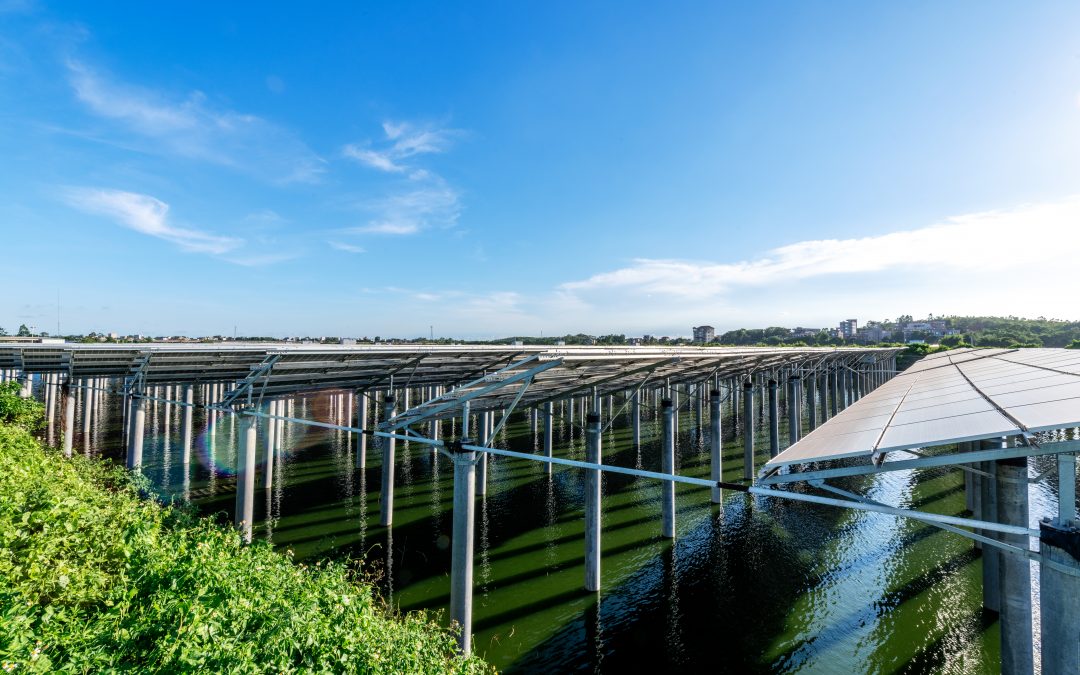Water scarcity is a growing challenge across the globe, affecting over 2 billion people who lack access to safe drinking water. As climate change exacerbates this crisis, there is an urgent need for innovative, sustainable solutions. Solar-powered desalination and water purification projects are emerging as viable options to address water scarcity in arid and semi-arid regions. These projects harness the power of the sun to convert seawater into potable water and purify contaminated freshwater sources, providing clean water without relying on fossil fuels.
The Concept of Solar-Powered Desalination
Desalination is the process of removing salts and minerals from seawater or brackish water to produce fresh, drinkable water. Traditional desalination methods, such as reverse osmosis and thermal distillation, are energy-intensive and heavily reliant on fossil fuels. This dependency not only makes them expensive but also contributes to greenhouse gas emissions, undermining efforts to combat climate change.
Solar-powered desalination, on the other hand, utilizes solar energy to drive the desalination process. By combining solar photovoltaic (PV) panels or solar thermal systems with desalination technologies, these systems can produce clean water in a more sustainable and cost-effective manner. The integration of solar energy reduces operational costs and carbon footprints, making it an environmentally friendly alternative to conventional desalination.
Types of Solar-Powered Desalination Technologies
There are several solar-powered desalination technologies currently in use or under development, each with its unique approach to converting seawater into fresh water:
- Solar Photovoltaic (PV) Reverse Osmosis (RO):
- This method uses solar panels to generate electricity, which powers the reverse osmosis process. Reverse osmosis involves forcing seawater through a semi-permeable membrane that filters out salt and impurities. Solar PV-powered RO systems are particularly suitable for small-scale, decentralized desalination plants in remote areas where grid electricity is unavailable.
- Solar Thermal Desalination:
- Solar thermal desalination utilizes solar energy to heat water, creating steam that is then condensed to produce freshwater. This method includes technologies such as Multi-Effect Distillation (MED) and Multi-Stage Flash (MSF) distillation. Solar stills, a simpler form of solar thermal desalination, are also widely used in rural and off-grid regions for small-scale water purification.
- Solar Humidification-Dehumidification (HDH):
- This process mimics the natural water cycle. Solar energy heats seawater, creating humid air that is then cooled to condense freshwater. HDH systems are particularly effective in regions with high solar irradiance and are known for their simplicity and low maintenance requirements.
- Solar-Powered Electrodialysis:
- Electrodialysis (ED) uses electrical current to separate salt ions from water through selective ion-exchange membranes. When powered by solar energy, electrodialysis can be an efficient method for desalinating brackish water and is often used in areas with brackish groundwater resources.
Benefits of Solar-Powered Desalination and Water Purification
- Environmental Sustainability:
- Solar-powered desalination is a clean and green technology. By leveraging renewable solar energy, it significantly reduces greenhouse gas emissions compared to conventional desalination methods that rely on fossil fuels. This contributes to global efforts to combat climate change and reduces the carbon footprint of freshwater production.
- Cost-Effectiveness and Accessibility:
- Although the initial setup costs of solar desalination systems can be high, the operational costs are relatively low due to the abundance and free availability of sunlight. Over time, the reduced energy costs make these systems more affordable and accessible, especially for remote and off-grid communities.
- Scalability and Flexibility:
- Solar desalination technologies can be scaled up or down to meet specific water needs, making them suitable for both small communities and larger urban settings. Modular designs allow for easy expansion or reduction based on water demand.
- Improved Water Security:
- Solar-powered desalination can enhance water security in regions prone to droughts, arid climates, and water-stressed conditions. By providing a reliable source of clean water, these projects can help stabilize local water supplies and reduce dependency on unpredictable natural water sources.
Real-World Applications and Success Stories
- Masdar City, United Arab Emirates:
- In the United Arab Emirates, Masdar City has implemented a pilot solar desalination plant that uses solar thermal energy to power a multi-stage flash distillation process. The project aims to demonstrate the feasibility of integrating solar energy with desalination to provide a sustainable water supply in desert climates.
- Kenya’s Solar Desalination Project:
- In Kenya, a non-profit organization called GivePower has installed solar-powered desalination systems in coastal communities to provide clean drinking water. These systems use solar PV to power reverse osmosis units, offering a sustainable solution to water scarcity in regions where saltwater is abundant but freshwater is scarce.
- Australia’s Sundrop Farms:
- Sundrop Farms in Australia has adopted a unique approach to agriculture in arid regions by using solar thermal desalination to produce freshwater for irrigation. The facility uses concentrated solar power (CSP) to generate heat for a desalination process that supplies water to grow crops, demonstrating the potential of solar-powered desalination for sustainable agriculture.
Challenges and Future Prospects
Despite the benefits, solar-powered desalination also faces challenges, including high initial capital costs, maintenance of solar panels and desalination equipment, and the need for technological advancements to improve efficiency. However, ongoing research and development efforts are focused on overcoming these challenges, and the falling costs of solar technology are making it increasingly viable.
As climate change continues to impact global water resources, solar-powered desalination and water purification projects offer a promising path forward. These technologies not only provide clean drinking water but also align with sustainable development goals by reducing energy consumption and carbon emissions. As more countries and communities invest in solar desalination, the world moves closer to a future where clean, accessible water is available to all.
While there may be logistical issues in making the change to solar, we can solve them all for you, easily and economically. Contact Us at Renewable Energy and we’ll show this can be done to your advantage.


Recent Comments